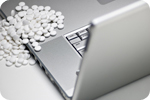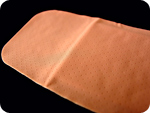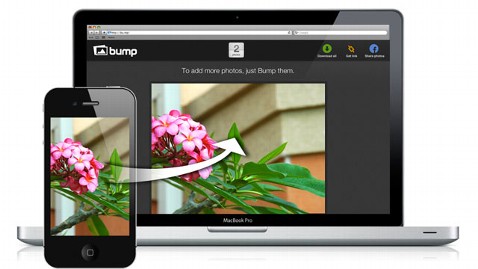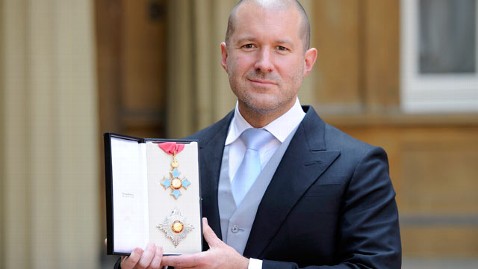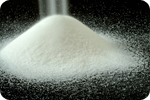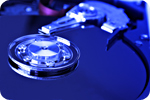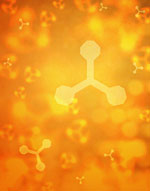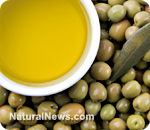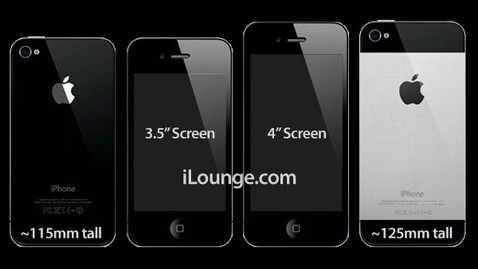Gene therapy and genetic engineering: the future of medicine?
Is gene therapy the next wave in medicine? As the age of chemical-based medicine is now thoroughly discredited (prescription drugs are toxic, haven't you heard?), and drug companies are losing both profits and credibility, there's a mad dash to find something to replace the current drug racket. Could gene therapy be the next "big thing" for Big Pharma?
Interestingly, gene therapy has very real potential for enhancing human health, but not in the way the drug companies think. Unfortunately,
gene therapywill very likely be marketed and promoted in much the same way chemical
medicinewas: patients don't necessarily have to change their lifestyles or make proper
foodchoice or engage in physical exercise, we'll be told. All they need to do is undergo these gene
therapyprocedures. So, even while gene therapy may sound exciting at first, it has many of the same pitfalls of conventional chemical-based medicine. That is,
it takes away the responsibility from the patient. In fact, the more we talk about the genetic basis of
disease, the more power we strip away from individuals. Go see the movie "GATTACA" for an interesting
sciencefiction look at what a society might be like if everyone were judged on their
genetic code, and not their behavioral choices or free will.
The fact is even though there are genetic influences on the way our bodies process foods, deal with stress or build
bonemass, those influences only account for a tiny percentage of our overall
health outcome. After all, people living today span the range of
healthfrom the utterly diseased to the super-healthy, and yet every human being shares at least 99.5 percent of the exact same
genes. So
we are nearly identical from a genetic standpoint, and yet we express a wide variety of health outcomes.
So, even as gene therapy technologies are made available, and even as they sound like miracle cures for disease, the ultimate expression of health can only come from within each patient. This is where, long term, the true revolution in medicine may take place, because, whether we're talking about chemical medicine, or moving through gene therapy or vibrational medicine, or even natural
healingtherapies, it's still all about healing the patient with an external therapy. That, in my view, is an improper view of health and medical intervention.
True healing only happens from within. True healing only takes place when the patient is involved in that healing, when the patient's own immune system is supported, when their belief systems are improved to eliminate distortions, when they begin to take responsibility for their actions, when they begin to actually appreciate and love themselves and so on. This is where healing actually takes place, and no amount of
technology, even 500 years of technological advances, can replace that personal role in healing.
Genetic engineering -- reprogramming theDNAof our species
There are some interesting technologies, though, that can help make the prevention of chronic disease easier for people. I have discussed some of these in my book "The Top 10 Most Important Emerging Technologies for Humanity," which is available for downloading free of charge atwww.truthpublishing.com. In the book, I argue thatgenetic engineeringis indeed an important technological advance for not only the success of our species, but also for enhancing the health of ourpopulation.I'd like to talk about genetic engineering for a moment, but to preface it with the recognition that we, as a society, are nowhere near the level of maturity and
ethicsrequired for manipulating the genetic code. I don't believe we are ready for genetic engineering, but at some point we may evolve ethically and spiritually to the point where we can more responsibly grasp this potential technology. So even though I'm in favor of exploring genetic engineering in the long run, I am solidly against it today.
Down the road, here's how genetic engineering might be put into use to enhance human health: If you look at a lot of the health problems afflicting us today, such as
diabetes, heart disease, obesity or even
mental disorders, they are the result of a mismatch between the hardware we developed as a species and the present
environment. For example, our ancestors lived in an environment where food and
calorieswere scarce. Thus they developed the hardware, software and firmware that would motivate them to seek out calories and, any time they were in the presence of excess calories, to store those calories on their bodies as fuel to be used at a future time and date. This was a
survivalmechanism, and it served humanity quite well. After all, we survived long enough to be alive today, reading this.
This same hardware and software can be a disservice to humans living in the modern environment, because now we have, at least in developed countries, an excess of calories. We have more food than we know what to do with, but our hardware and software keeps telling us to keep
eatingall of this food, that we never have enough and we don't feel comfortable unless we have our bellies full.
This is something that could be completely eliminated through genetic engineering. With engineering, the biochemistry responsible for this quest for calories could be altered, creating a person who isn't hungry all the time and who doesn't seek out
refined carbohydratesor overeat even when there's plenty of food available.
Interestingly, our hardware and software has also developed to reward us through
brainchemistry when we consume refined
carbohydratesand fat. Why are these rewarded? They are rewarded because carbohydrates and
fatrepresent the taste of
energy. Fat is a high-density source of energy, and carbohydrates are a fast-acting, rapid energy source. Both of these are desired by your
bodyfor survival. So you have been programmed with hardware and software that rewards you for consuming these items. This is why ice cream tastes so delicious. It's not that it "IS" delicious; it's that you've been programmed to be rewarded for eating ice cream. In a sense, we are all slaves of our ancestors. We're slaves of the genetic process that got us here through arduous survival, and
in many ways, this genetic code no longer serves us in modern society.
So imagine if you had a population with no desire to eat whatsoever; all
tastesensors were eliminated and there was absolutely no reward for consuming a carbohydrate. What would that population look like? Chances are, that population wouldn't live very long, because no one would bother to eat. If people were required to eat only due to a realization that they need food to survive, they're not likely to pick up much food. So that population wouldn't do very well, and we would be ill-served to manipulate our genes to desire no food whatsoever. However, suppose we manipulated our genetic code to desire some food, but not very much. Or suppose we altered our taste sensors to really enjoy the taste of bitters like dark, green leafy
vegetables, or to dislike the taste of
sugar. What would that population look like?
Very likely, it would find itself in an outstanding state of health. Since it disliked refined sugars and refined carbohydrates, it would not suffer from diabetes, obesity and many other
disordersrelated to the consumption of those items. Since the population would enjoy the taste of
greenleafy vegetables and bitter foods, it would consume more of those. Thus,
the taste sensors engineered into our bodies determine the level of health we tend to achieve, because they determine thedietwe pursue naturally without any intervention or effort.In other words: Today it doesn't take any effort to pig out on ice cream, donuts, candy bars and soft drinks. That's easy, because that's what we're wired for. However, through genetic engineering, we could alter that wiring and create a happy,
healthyindividual that craved health-enhancing foods.
We could also do the same thing with
sunlightand vitamin D. Today, we have people who are suffering from chronic vitamin D deficiency because they live on the wrong part of the planet based on their
skinpigmentation. If you have darker skin, you are supposed to be living closer to the equator, as your skin is designed to block the excessive
radiationthat comes from living there. If you have fair skin, you have a body designed to live further away from the equator in a place where you're not getting much sunlight, because fair skin doesn't block the sun and allows more radiation to penetrate your skin, which results in the production of vitamin D.
Vitamin D, of course, is an essential nutrient for preventing prostate cancer, breast cancer, osteoporosis and many other disorders.
Through genetic engineering, we can alter our bodies to fit our environments and fit our modern societies. Today, very few people get adequate sunlight, so we could create mechanisms by which our skin produces more vitamin D with less exposure to
naturalsunlight. We could also engineer the body to produce vitamin C, which is produced by other animals like dogs and cats, but is not produced in the
human body.
These are just a few small examples of the many ways in which genetic engineering can help alter our health outcome by changing our hardware and software. Yet, I think there are many other important applications of genetic engineering. One of the most notable today would be
altering the behavioral characteristics of our species.
We have a genetic code that programs us with certain behaviors. If you are a male of the species, you're programmed with behaviors of conquering resources, owning land, declaring war on your neighbors, controlling access to reproductive resources, and you tend to have a more aggressive, confrontational
behaviorthan females of the species. This is all built right into the human genome, which is one reason why we always see males declaring war on each other. You don't see many wars in the history of
civilizationactually started or pursued by
women. That's because women have a more nurturing quality. Their survival depended on their behavior being more maternalistic and community-oriented, whereas the survival of males depended on their behavior being dominating, threatening, confrontational and aggressive. So if you want to end war and create peace in the world, you have to engineer the propensity for war out of the gene pool, and you do that by altering the genetics and altering the way males operate.
I can just hear all the men out there screaming something like, "Oh, you want to turn us all into women." Well, not exactly, but let's face it: The idea of protecting your acre of savannah, scaring off rival tribes and fighting over reproductive access to women doesn't exactly translate well into modern times. What we get is, in fact, the kind of thing we're seeing right now in terms of the war on Iraq, the confrontational
natureof international diplomacy and national leaders who essentially act out the hardwired aggression traits of our ancestors. With the right genetic engineering, those behaviors could be history. We could create a population hardwired for peace and cooperation. (In fact, I don't think we'll ever see peace on this planet until we find a way to take the WAR out of men. Because men will always find new justifications for fighting each other. It's in our nature.)
Healing people, healing the world
So you can talk about genetic engineering in terms of individual health, but you can also talk about it in terms of global health. How do we heal nations? How do we heal the world? One way we do it is stop conflict and stop the innate desire to control the land, resources or peoples of your neighbor. Getting back to health, there are plenty of other things you can do to alter the health of the population through genetic engineering. Right now, if a person goes on a diet and stops eating large portions, theirmetabolismslows. Their body begins to shed bone mineral density and muscle mass and actually slows their use of calories. This, again, is an adaptation designed to conserve biology or to protect the survival of the species. What if this were programmed out of the species? What if people had a very high metabolism regardless of their current caloric intake? What if they burned fat more easily or didn't limit the growth of muscles as much as they're limited today? In that case, you would have a population of high–energy, calorie-burning people, who are essentially wasting lots of food because they're burning up calories all the time. But they wouldn't be overweight or diabetic.Again, I'm not at all a proponent of genetic engineering today. I'm only presenting possibilities for the future -- a future when we as a civilization have enough maturity to pursue something as complex and potentially dangerous as genetic engineering. Today, we are merely infants. Most adults still act like children, and this is even more true in the fields of medicine and health technology, where full-grown adults still cling to their egos like four-year-olds. We'd have to mature a long, long way before we're truly ready to start playing God with out own genetic code.
But if that point is ever reached, there are truly incredible possibilities for uplifting
human civilization. What if we were to engineer larger brain mass? Now, obviously there's a limit to the size of brain able to fit the human species in terms of the birth process, but what if you were to increase brain mass density or size and essentially give the next generation new hardware for higher
intelligence? What would they do with that hardware? Does higher intelligence automatically translate into greater wisdom or greater quality of
life?
What if you gave people more acute senses like higher-resolution vision, greater touch senses, acute hearing or a much more developed sense of smell? As you can see, genetic engineering has a lot of possibilities, but in each of these possibilities you will also have unintended side effects in the same way we do today with chemical-based medicine. You might give someone enhanced brain density, but then it might turn out the unnaturally dense brain matter could have unintended consequences such as seizures or mental disorders. It might result in a reduced life span. The human body is quite complex and, as we are seeing today with conventional medicine, it is impossible to predict the long-term consequences of these intervention medical therapies.
That's one of the many reasons why it's so dangerous to start toying with genetic engineering. But it's not just the science that's lacking today, as I've explained: it's the maturity of our civilization, the ethics, the spirituality. Just because we are technically ready to start manipulating the DNA of our species in no way means we ought to.
Learn more:
http://www.naturalnews.com/004743_genetic_engineering_gene_therapy.html#ixzz1vW37hFhT



